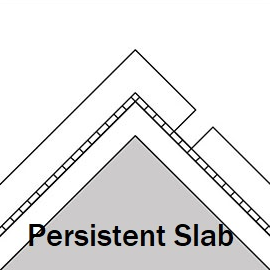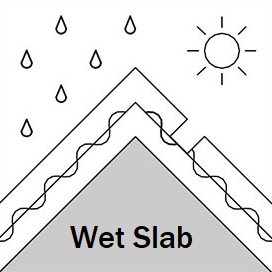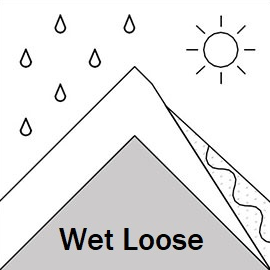Gudauri
Natural avalanches are possible, human-triggered avalanches are likely. Small avalanches in many areas, or large avalanches in specific areas, or very large avalanches in isolated areas.
The current heatwave will unfold the most in the upcoming days, creating an especially hazardous situation that can be associated with highly destructive slides. Correct timing of backcountry travel becomes even more crucial.
Forecast issued at: 12 March 2025 23:00
Forecast valid until: 16 March 2025 23:00
Forecaster: Petr Zherdev
High Alpine
> 2600m
3 Considerable
Dangerous avalanche conditions. Careful snowpack evaluation, cautious route-finding and conservative decision-making essential.
Alpine
2000m - 2600m
3 Considerable
Dangerous avalanche conditions. Careful snowpack evaluation, cautious route-finding and conservative decision-making essential.
Sub Alpine
< 2000m
3 Considerable
Dangerous avalanche conditions. Careful snowpack evaluation, cautious route-finding and conservative decision-making essential.
Avalanche Problems
Persistent Slab

Riders' weight, rapid warming or a smaller surface avalanche could cause weak layers deep in the snowpack to fail. This could create a very large avalanche event, so keep this in mind when planning your route. Will you be in a place of relative safety if this happens? If not, is that a risk you should you take? Whumphing and cracking are signs you are on unstable snow. Remember that a whumph (snow collapsing under your feet) could even set off this problem from a distance or from a flat area.
| Sensitivity | The specific avalanche problem type is difficult to trigger with a human rider. |
| Distribution | Many locations. Evidence for instabilities is frequently found, in many locations. |
| Time of Day | All day |
| Trend | Improving |
| Confidence | Moderate |
Wet Slab

Current heatwave leads to a rapid destabilisation of thick layers of snow and loss of their cohesion to the underlying surfaces on solar aspects what is likely to be the case on all elevations as the freezing level will stay high above 3000 m. during the upcoming period. Avalanches of this type, being heavy and destructive, are especially likely to trigger deep weak layers on the neighboring slopes (or step down onto deeper weak layers) as well.
| Sensitivity | The specific avalanche problem type is difficult to trigger with a human rider. |
| Distribution | Specific areas, with common characteristics. Evidence for instabilities exists, but it is not obvious and finding it requires careful observations. |
| Time of Day | All day |
| Trend | Deteriorating |
| Confidence | Moderate |
Loose Wet

As the sun gets stronger and the air temperature increases, surface snow will become unstable on steeper slopes. Even a small slide could trigger a deeper slab.
| Sensitivity | The specific avalanche problem type is reactive to human rider triggers. Easy to trigger with ski cut. |
| Distribution | Specific areas, with common characteristics. Evidence for instabilities exists, but it is not obvious and finding it requires careful observations. |
| Time of Day | All day |
| Trend | Deteriorating |
| Confidence | Moderate |
Recent Avalanches and Snowpack
Recent avalanches:
- Some very large avalanches failed on buried weak layers around Feb 28th. Lomisa ridge NE 2200m, Milioni valley NW 3000m, Sadzele NE, 3200m, size 3 - 5
- A couple of size 2 windslabs seen 8th March on NE aspects around 3000m, Miketi and Sadzele
- A skier-triggered size 2 persistent slab that failed near the ground was reported on March 2nd - Kobi valley, NW, 2400m.
- Wet loose slides seen 7th and 8th March, size 1 and 2, Lower Kobi and the peak north of Kudebi
- Skier triggered size 2 avalanche in Lomisa area - 1800 m., NE)
- Size 2 windslab avalanches on E and NE aspects
Snowpack: Excessive moisture in the snowpack created by the ongoing heatwave percolates it almost entirely on solar aspects making the snowpack unsupportive and likely to create bigger wet avalanches on steeper slopes. This contributes to the stabilisation of deep persistent weak layers on solar aspeccts but there is still no hard evidence to get rid of that problem entirely - some collapses in the snowpack are still observed on solar aspects. At higher elevations on shaded slopes and in the shaded areas faceted snow is still buried under hard layers of snow created by the stronger winds that followed the last storm in late february - e.g. this was still present on Sadzele S slope at 3000 m. on 10 of March.
Weather
Air temps will continue to rise reaching as high as 10C around mid-day on 14-15 of March and staying above 0C even during the night hours at 2000 m. Freezing level will remain above 3300 meters in the upcoming days. Mostly sunny with no significant winds.
Disclaimer
Our avalanche forecasters are internationally qualified and experienced professionals, and data is provided by skilled observers. We encourage you to make your own observations and decisions, without relying solely on our forecast, since any forecast is a generalised 'best guess', and in certain cases it might be inaccurate. We can not be held liable for any actions you take in the backcountry that may result in injury, loss or death.